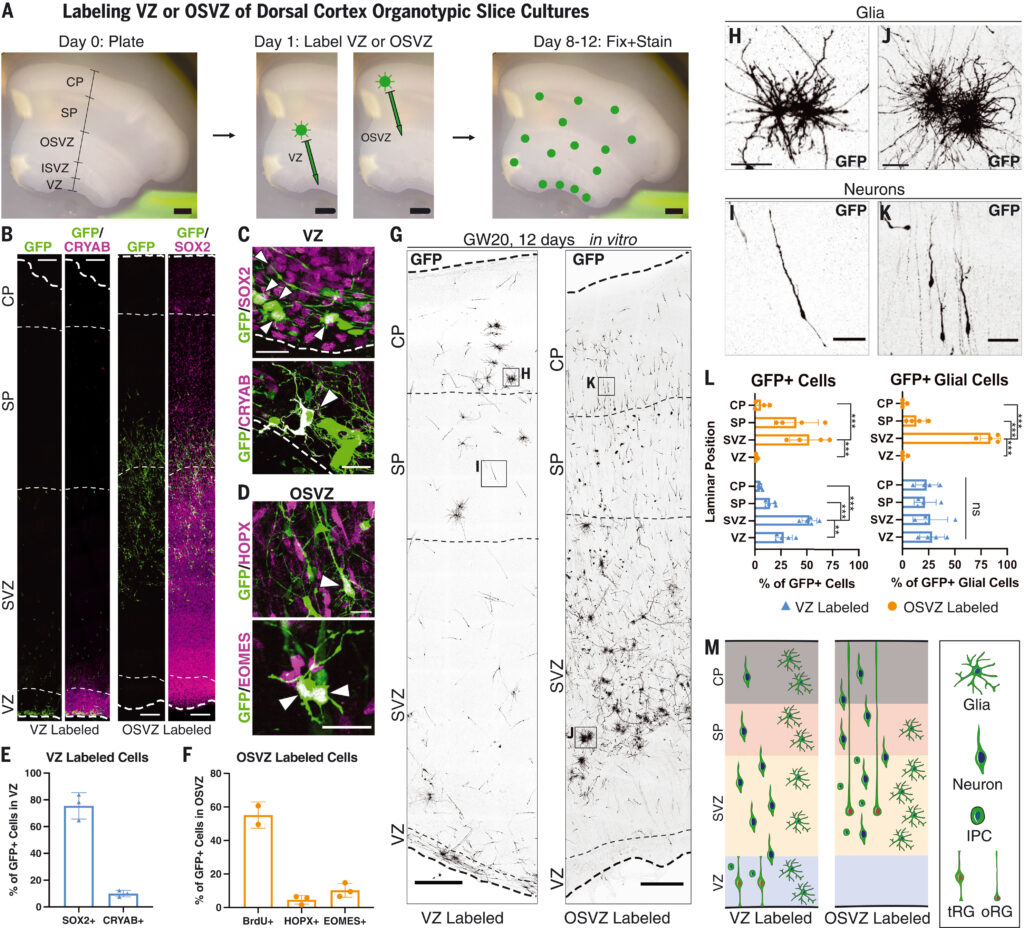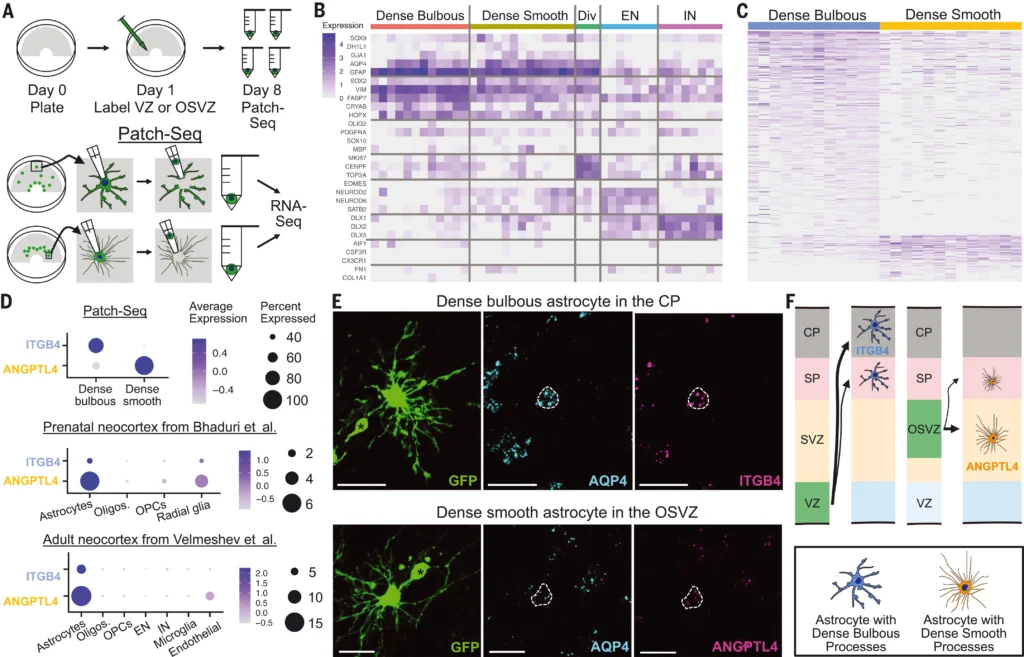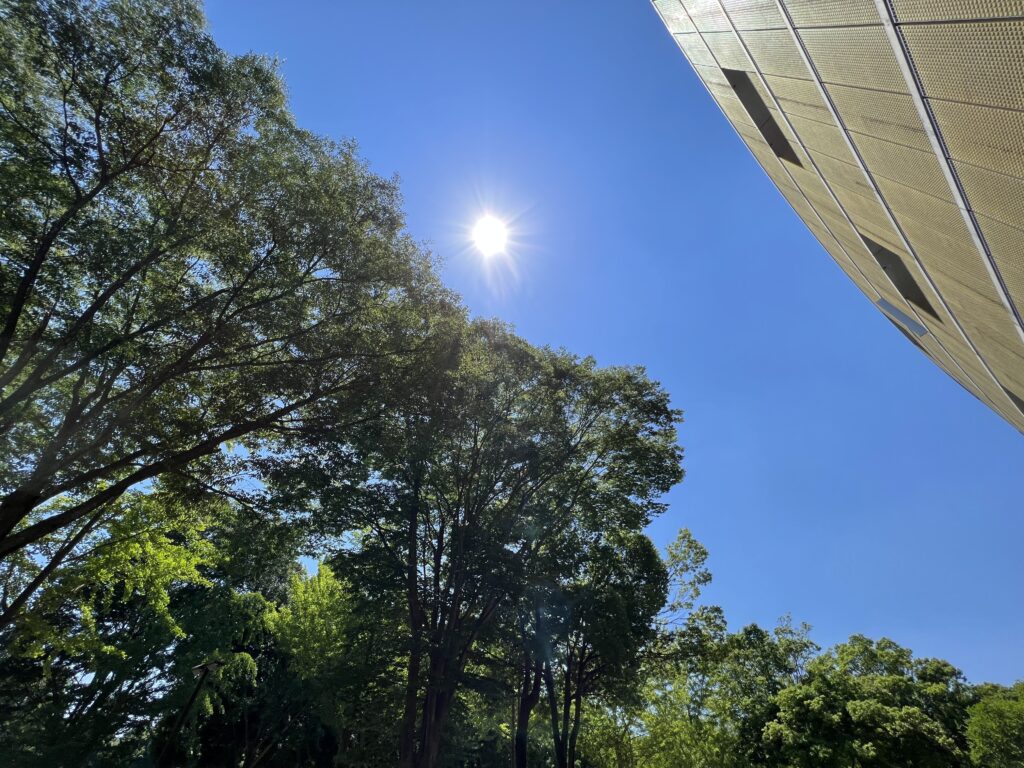SCIENCE 19 May 2022 Vol 376, Issue 6600 pp. 1441-1446
DENISE E. ALLEN HTTPS://ORCID.ORG/0000-0001-9205-2796KEVIN C. DONOHUE HTTPS://ORCID.ORG/0000-0002-4237-5957CATHRYN R. CADWELL HTTPS://ORCID.ORG/0000-0003-1963-8285DAVID SHIN HTTPS://ORCID.ORG/0000-0001-7029-089XMATTHEW G. KEEFE HTTPS://ORCID.ORG/0000-0002-2477-2975VIKAAS S. SOHAL HTTPS://ORCID.ORG/0000-0002-2238-4186AND TOMASZ J. NOWAKOWSKI
Department of Anatomy, University of California, San Francisco, CA, USA. (カリフォルニア大学サンフランシスコ校 解剖学講座)
Department of Psychiatry and Behavioral Sciences, University of California, San Francisco, CA, USA.
Department of Neurological Surgery, University of California, San Francisco, CA, USA.
Eli and Edythe Broad Center for Regeneration Medicine and Stem Cell Research, University of California, San Francisco, CA, USA.
Weill Institute for Neurosciences, University of California, San Francisco, CA, USA.
Origin of astrocyte populations (アストロサイトの起源)
In the developing brain, radial glia are the stem cells that generate astrocytes. By midgestation in humans, radial glia form two populations derived from the pial surface of the brain or the ventricular surface. Allen et al. used lineage tracing and single-cell transcriptomics in the developing human brain to understand how these two populations of radial glia relate to astrocyte diversity. Astrocytes that populate the brain’s gray matter, which is densely packed with neuronal cell bodies, are generated by stem cells in the ventricular zone. Stem cells in the outer subventricular zone produce a different suite of astrocytes restricted to the brain’s white matter. —PJH
発達中の脳において、放射状グリアはアストロサイトを生成する幹細胞である。ヒトの場合、妊娠中期までに、放射状グリアは脳膜表面と脳室表面に由来する2つの集団を形成する。UCSFのAllenらは、発達中のヒトの脳において、系統追跡と単一細胞トランスクリプトミクスを用いて、放射状グリアのこの2つの集団がアストロサイトの多様性とどのように関係しているかを明らかにした。ニューロンの細胞体が密集している灰白質に生息するアストロサイトは、脳室帯の幹細胞によって生成される。脳室下帯の外側にある幹細胞は、脳の白質に限定された別の種類のアストロサイトを生み出す。
Abstract
Progenitors of the developing human neocortex reside in the ventricular and outer subventricular zones (VZ and OSVZ, respectively). However, whether cells derived from these niches have similar developmental fates is unknown. By performing fate mapping in primary human tissue, we demonstrate that astrocytes derived from these niches populate anatomically distinct layers. Cortical plate astrocytes emerge from VZ progenitors and proliferate locally, while putative white matter astrocytes are morphologically heterogeneous and emerge from both VZ and OSVZ progenitors. Furthermore, via single-cell sequencing of morphologically defined astrocyte subtypes using Patch-seq, we identify molecular distinctions between VZ-derived cortical plate astrocytes and OSVZ-derived white matter astrocytes that persist into adulthood. Together, our study highlights a complex role for cell lineage in the diversification of human neocortical astrocytes.
ヒト大脳新皮質の前駆細胞は、脳室帯と外側脳室下帯(それぞれVZとOSVZ)に存在する。しかし、これらのニッチに由来する細胞が、同様の発生運命を辿るのかどうかは不明である。我々は、ヒトの初代組織で運命マッピング(fate mapping)を行い、これらのニッチに由来するアストロサイトが解剖学的に異なる層を形成することを明らかにした。皮質板のアストロサイトはVZ前駆細胞から発生し、局所的に増殖する。一方、白質のアストロサイトは形態的に不均一で、VZとOSVZの両方の前駆細胞から発生することが判明した。さらに、Patch-seqを用いて形態的に定義されたアストロサイトのサブタイプのシングルセルシークエンスにより、VZ由来の皮質板アストロサイトとOSVZ由来の白質アストロサイトの間に、成体まで持続する分子上の区別を明らかにした。本研究は、ヒト新皮質アストロサイトの多様化における細胞系統(cell lineage)の複雑な役割を明らかにするものである。
Discussion 考察
本研究は、ヒト新皮質アストロサイトの多様性の出現の根底にある初期発生事象を明らかにするものである。我々は、妊娠中期にOSVZ前駆細胞が白質アストロサイトを生み出し、VZ前駆細胞がより表層の灰白質アストロサイトを生み出すことを見出した。この分化パターンは、OSVZ前駆細胞が皮質上層に向かうニューロンを生み出す神経発生とは異なっている。げっ歯類とは異なり、ヒトでは神経発生とグリア形成が広範囲にわたって重複しているため(26)、個々のヒト前駆細胞がこの時期に神経細胞とグリア細胞の両方を生み出すことができるのか、それとも古典的な神経発生からグリア形成への「スイッチ」に従うのか、またこれらの分化パターンが発生を通じて維持されるのかについては、さらなる研究が必要である。私たちの研究はまた、マウスではこれまで報告されていなかった「切断型(truncated)」放射状グリアが、皮質の「密集球状“dense bulbous”」アストロサイトの明確なサブタイプの生成に関与していることを示唆している。ヒトでenrichしていると考えられている他のアストロサイトのサブタイプ、例えば、「varicose projectionアストロサイト」や「interlaminar astrocytes」の発生起源を明らかにするために、さらなる研究が必要である。
アストロサイトが神経疾患に関与している可能性はますます高まっており、統合失調症、双極性障害、自閉スペクトラム症には、異なるアストロサイトサブタイプが関与していることが分かっている。本研究で明らかになった白質アストロサイトと灰白質アストロサイトの分子的区別は、それらのユニークな発生上の特徴や疾患への影響についての洞察を可能にするかもしれない。例えば、「密集球状“dense bulbous”」アストロサイトに濃縮された多くの遺伝子は、ITGB4 , TMEM158, MGMT, CELSR1など、グリオブラストーマ細胞の増殖と浸潤に関係しており、これは彼らの驚くべき移動性行動を説明できるかもしれない。これらの初期アストロサイトサブタイプの発生過程を第3期から成体まで詳細にマッピングすることは、このアストロサイトの多様性が前駆細胞のレベルでコード化されているのか、あるいは異なる脳領域や細胞近隣に存在する環境の手がかりによって動的に影響を受けるのかを明らかにするために重要であろう。この結果は、神経疾患におけるアストロサイトの多様な役割の根底にある、環境または遺伝的障害に対するサブタイプ固有の重要な脆弱性が明らかになるかもしれない。


〇Patch-seq (ホールセルパッチクランプ法と遺伝子発現解析法の組み合わせ)

